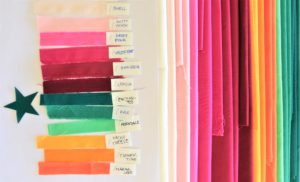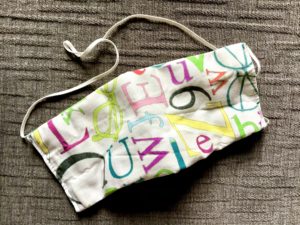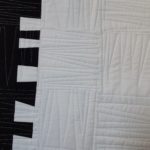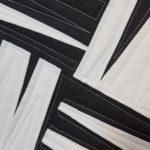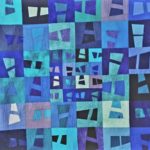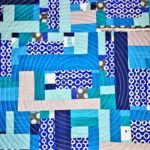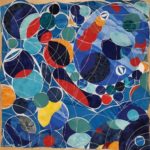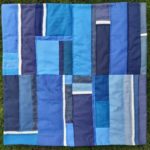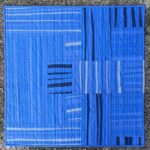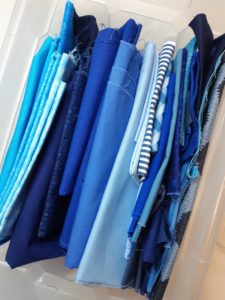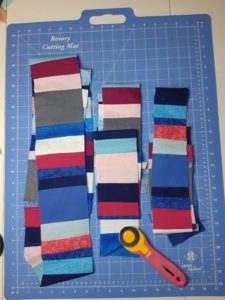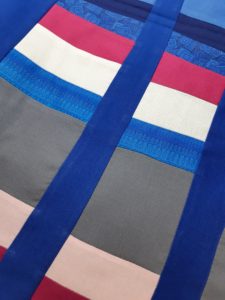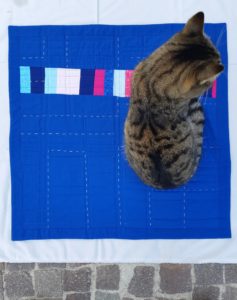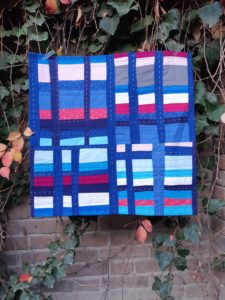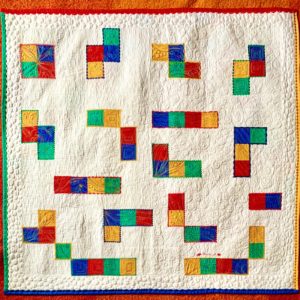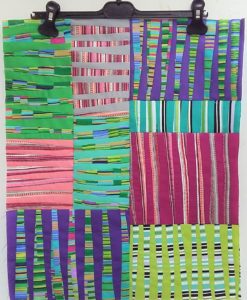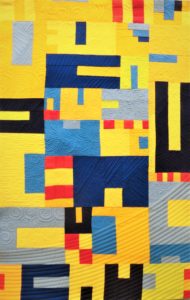On May 6th we had the great opportunity to be the “special guests” of the joint Zoom meeting of Modern Fusion and Beyond Borders, two groups of the Individual Members Coalition of the Modern Quilt Guild. We talked about our story, a beautiful opportunity to present Quilt Improv Studio in a collective form, with the participation of some of our game participants who are also MQG Individual Members. You can read here what we said. Enjoy!
THREE YEARS OF QUILT IMPROV STUDIO
What happens when three quilters passionate for improv get in contact, even if from remote?
We live in 3 different cities : Paola lives in Trieste, Giovanna in Venice and Carla in Rome, 400 miles of total distance so Internet, Zoom and chat are the only ways to keep in touch. We have been using social networks for many years. We like the idea of a virtual community that breaks down distances and barriers. In 2019 we started to follow each other on our Instagram pages.
In January 2020 Giovanna and Paola had some common projects, such as to travel to Prague Patchwork Meeting and the idea to organize an exhibit of improv quilting in Trieste. We were, and we still remain, two improv quilters that work with a very different style, so we decided to play together in a kind of challenge between us. We decided to use two common prompts: our quilts had to have the same color palette and the same size, in order to see where our different creativity would have led us. We chose to work with the “Kona cotton of the year” that, at that time, was a green called “Enchanted”.
One of the characteristics of improv patchwork is that everybody is free to work as she likes and that, even if we are starting from the same point, the results will be totally different. And we like this idea! To see beauty in differences, to see the creativity of each other, still with something in common that builds a connection.
So, we started working on the quilts and we posted some sneak peeks on Instagram.
But suddenly, when our works were finished, the Pandemic began and, in a few days, the entire world was in lockdown. Everyone knows the fears and sensations we experienced in those days. All our dreams and plans were cancelled within days. After a few days, during a Zoom meeting where Paola was talking about improv, we saw and “met” virtually Carla on the screen. During the meeting we were the three people that interacted the most so our conversation continued in the evening on a chat, finding a lot of common points of view. Day after day many ideas began to come out, we were looking for something to distract us from worries, to spend time at home doing what we love most: sewing. After an initial moment of confusion, we decided to react. So, we took the initial idea of sewing using the same input, the same palette, to challenge the three of us.
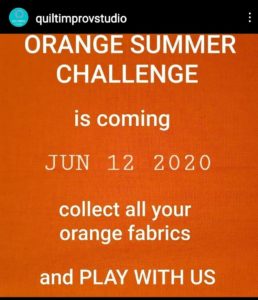 Then, since we were using Instagram, one day we asked ourselves: why not share our game and invite everyone who wants to join? It would be lovely to see the beauty created by the heterogeneity of the works made by more people than just the three of us. In a few weeks we created our virtual project, we chose a name, (we chose the word “Studio” with the double meaning: a way to learn and a virtual place where to meet). We built from scratch a website, we wrote articles, we took pictures, we opened an Instagram account to be dedicated to a collective, and we made our first post in June. We simply wrote: “Orange summer challenge is coming, collect all your orange fabrics and play with us”. We were glad and surprised when people from all over the world started to play with us; after the initial period, most of them continued to play almost every challenge; now we consider them friends. With the end of the restrictions due to Covid we managed to organize the exhibition we initially wanted to do in Trieste, we had the chance to met some of our participants, such as to see Maria Paz from Chile while we were in France and others in the Italian biennial textile show Verona Tessile! Recently we met some of the Italian participants during an “improv retreat” we organized near Venice: it was really exciting to get to know them in person and to sew together with the same prompt!
Then, since we were using Instagram, one day we asked ourselves: why not share our game and invite everyone who wants to join? It would be lovely to see the beauty created by the heterogeneity of the works made by more people than just the three of us. In a few weeks we created our virtual project, we chose a name, (we chose the word “Studio” with the double meaning: a way to learn and a virtual place where to meet). We built from scratch a website, we wrote articles, we took pictures, we opened an Instagram account to be dedicated to a collective, and we made our first post in June. We simply wrote: “Orange summer challenge is coming, collect all your orange fabrics and play with us”. We were glad and surprised when people from all over the world started to play with us; after the initial period, most of them continued to play almost every challenge; now we consider them friends. With the end of the restrictions due to Covid we managed to organize the exhibition we initially wanted to do in Trieste, we had the chance to met some of our participants, such as to see Maria Paz from Chile while we were in France and others in the Italian biennial textile show Verona Tessile! Recently we met some of the Italian participants during an “improv retreat” we organized near Venice: it was really exciting to get to know them in person and to sew together with the same prompt!
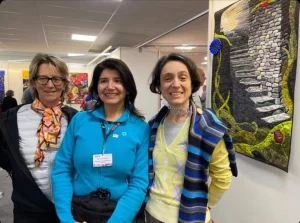
We have been carrying out this no-profit project for 3 years now, and the seventh Challenge, “Dualism” is currently taking place on Instagram. We are not connected as a group to sponsors, shops or associations. Our games don’t have winners, prizes, or giveaways. Everybody manages their timeline of work (no stress!): we only ask to respect the deadline to post on Instagram all the pictures of the finished quilts.
We want to give space and visibility to anyone who loves or wants to approach improv patchwork and to create a sense of community.
Our participants know it, they are very motivated and determined and we see that some of them enter their works in local or global competitions with good results! Others motivate us to continue through their messages. This is really satisfying and gratifies us for all the work we do with passion.
That’s all… for the moment!
Giovanna, Carla and Paola
